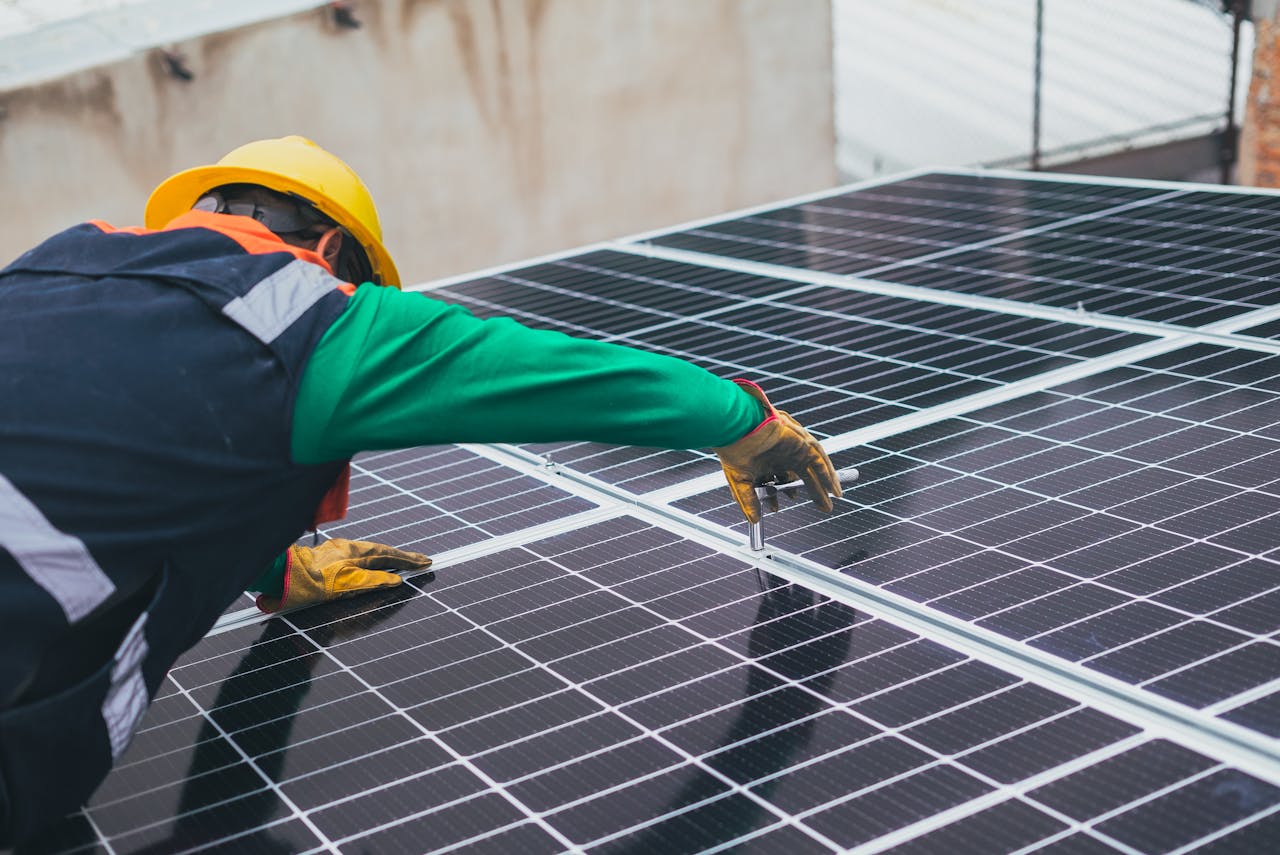As the world grapples with climate change and the need for sustainable energy solutions, solar and wind power have emerged as leading forces in the transition toward a cleaner, greener future. These renewable energy sources offer significant environmental, economic, and social benefits while reducing dependence on fossil fuels. With technological advancements and increased adoption, solar and wind energy are playing a pivotal role in achieving a sustainable energy future. This article explores why these two energy sources are essential and how they can shape a cleaner, more resilient world.
The Growing Need for Renewable Energy
Fossil fuels have powered human progress for over a century, but their environmental consequences are undeniable. Carbon emissions from coal, oil, and natural gas contribute to global warming, air pollution, and resource depletion. In contrast, solar and wind energy offer sustainable alternatives that reduce greenhouse gas emissions and promote energy security.
The global shift toward renewable energy is driven by:
- Climate Change Mitigation: Reducing carbon emissions is essential to limiting global temperature rise and preventing extreme weather events.
- Energy Security: Diversifying energy sources reduces reliance on imported fossil fuels, enhancing national energy independence.
- Economic Benefits: Renewable energy creates jobs, lowers electricity costs, and stimulates local economies.
The Power of Solar Energy
1. Abundant and Renewable Resource
Solar energy is one of the most abundant renewable resources available. The sun provides more energy in an hour than the world consumes in a year. Unlike fossil fuels, which are finite, solar power is an infinite resource that can be harnessed in almost any location.
2. Declining Costs and Increased Efficiency
The cost of solar photovoltaic (PV) panels has declined significantly in the past decade due to advancements in manufacturing, economies of scale, and improved technology. Modern solar panels are more efficient, durable, and capable of generating electricity even in low-light conditions.
3. Versatility and Scalability
Solar energy can be deployed in various ways:
- Rooftop Solar Panels: Allow homeowners and businesses to generate their own electricity.
- Large-Scale Solar Farms: Provide power to entire communities and industrial operations.
- Floating Solar Panels: Utilize bodies of water to generate energy without using valuable land.
4. Energy Storage and Grid Integration
Advancements in battery storage technologies, such as lithium-ion and solid-state batteries, have made solar energy more reliable. Energy storage allows excess solar power to be stored for use during nighttime or cloudy periods, ensuring a stable energy supply.
The Power of Wind Energy
1. High Energy Output and Efficiency
Wind power is one of the most efficient renewable energy sources. Modern wind turbines convert kinetic energy from the wind into electricity with high efficiency, often exceeding 40% energy conversion rates. Offshore wind farms, in particular, take advantage of stronger and more consistent winds to generate large amounts of power.
2. Low Environmental Impact
Unlike fossil fuel power plants, wind farms produce no air or water pollution. While they do require land, offshore wind farms mitigate this issue by utilizing ocean spaces.
3. Technological Advancements
Innovations in wind energy are improving its feasibility and effectiveness:
- Larger and More Efficient Turbines: Higher-capacity turbines generate more electricity with fewer installations.
- Vertical-Axis Wind Turbines (VAWTs): New designs enable wind capture from multiple directions, making them suitable for urban environments.
- Smart Wind Technology: AI and IoT-powered systems optimize wind turbine performance and reduce maintenance costs.
4. Energy Storage and Hybrid Systems
Like solar, wind energy benefits from energy storage solutions that balance supply and demand. Hybrid renewable energy systems, which combine solar and wind with storage, ensure continuous and reliable power generation.
The Economic and Social Benefits
1. Job Creation and Economic Growth
The renewable energy sector is a major source of job creation. Solar and wind industries employ millions of people worldwide in manufacturing, installation, maintenance, and research.
2. Lower Energy Costs
As solar and wind technologies become more efficient and widespread, electricity costs continue to decline. This makes clean energy more affordable for households, businesses, and governments.
3. Energy Access and Equity
Solar and wind power can bring electricity to remote and underserved areas, improving quality of life and fostering economic development in regions lacking traditional power infrastructure.
Overcoming Challenges
Despite their advantages, solar and wind energy face challenges that must be addressed:
- Intermittency: Energy storage solutions and grid modernization are crucial to managing variability in power generation.
- Infrastructure Development: Expanding transmission lines and smart grids will improve the integration of renewables into existing power networks.
- Public Acceptance: Educating communities about the benefits of renewable energy and addressing concerns about land use and aesthetics can enhance adoption.
Conclusion
Solar and wind power are key to a sustainable energy future, offering clean, abundant, and cost-effective solutions to global energy needs. As technological advancements continue to improve efficiency and storage capabilities, these renewable sources will play an even greater role in reducing carbon emissions, promoting energy security, and creating economic opportunities. By investing in solar and wind energy today, we are paving the way for a greener, more sustainable tomorrow.



